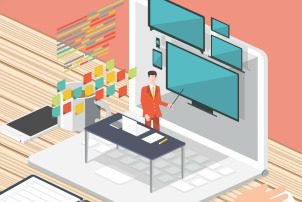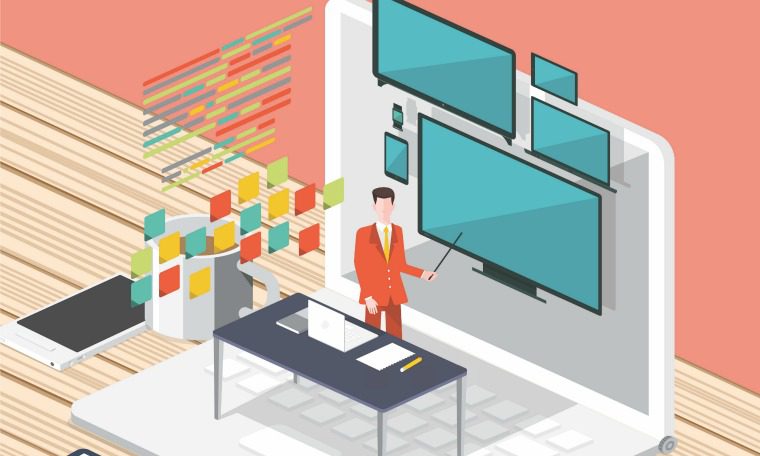 A rebound in output from the U.S. manufacturing sector to levels not seen since the recession is good news for well-trained workers who find themselves in high demand. But for low-skilled factory workers who are increasingly shut out of jobs that require technical skills and updated knowledge, retraining may be the only way to tap this potential — that is, if their knowledge and skills gaps can be filled in a meaningful and cost-effective way.
A rebound in output from the U.S. manufacturing sector to levels not seen since the recession is good news for well-trained workers who find themselves in high demand. But for low-skilled factory workers who are increasingly shut out of jobs that require technical skills and updated knowledge, retraining may be the only way to tap this potential — that is, if their knowledge and skills gaps can be filled in a meaningful and cost-effective way.
E-learning has been a workable solution to deliver employee education and training, past failures in some early models have left many organizations with mixed emotions about mass-produced learning. Adaptive learning, which more closely matches the way individuals learn, can be both highly efficient and more engaging for learners. Based on successes in the academic environment and among early corporate adopters, adaptive learning holds promise for employee education and retraining.
The development of next-generation adaptive learning models is well timed, given increased demand for corporate education today. For example, in a December 2016 USA Today article, IBM Chairwoman and CEO Ginni Rometty announced her firm plans to hire about 25,000 people in the next four years, and plans to spend $1 billion on employee training and development. Job creation and training, she said, is “not about white collar vs. blue collar jobs, but about the ‘new collar’ jobs that employers in many industries demand, but which remain largely unfilled.” Information technology, for example, remains a very tight labor market.
Former factory workers, however, will have difficulty seeking out positions in fields such as technology, or in other sectors such as hospitality or transportation that have high turnover. Adaptive learning could make a difference for both employers and prospective employees. Instead of requiring two- or four-year college degrees for employees, corporations could use it to offer micro-accreditation in specific areas. This would allow people to increase their skills and improve their competencies gradually, while making themselves more attractive to employers. Importantly, adaptive learning complements and reinforces workers’ existing skills and builds on them. Learners also experience satisfaction as they gain greater proficiency and new skills.
To be most effective, adaptive learning models need to meet people where they are, regardless of background, to help them get up to speed quickly, and acquire the skills that will make an immediate impact. This calls for a precise approach using a biological model that can be molded to each individual’s learning needs. The result is a much higher standard for corporate education and training, thanks to sophisticated platforms and more precise content delivery compared to e-learning in the past. The adaptive platform generates data to enable both the individual and the business to measure training impact.
The biological model differs significantly from the more traditional inference model, which takes an engineering approach. An inference model builds a network of learning objectives based on a series of events, essentially with arrows drawn between them. When something goes wrong, like a learner makes mistakes that show a lack of comprehension, the system backtracks through the arrows to find the last place where the learner comprehended the material.
Learning happens in a far more chaotic way. Developing a biological model that acknowledges there are countless ways to accomplish a series of learning objectives works better. Of course, there must be a general theme around what needs to be learned. But often what the learner grasps first — whether it’s one lesson or another — makes no difference at all.
Adaptive learning also holds promise to increase skills and build competencies at every level, while accommodating the varied experiences, knowledge and skills individuals bring to the workplace. With a biological model, courses can be adapted to each learner, from those who grasp the material easily and progress quickly to those who struggle. The system provides help as needed, as if each learner has a personal tutor.
As companies seek to fill jobs with people who have the right knowledge and skills, adaptive learning has an important role to play. To keep output growing, with unfilled manufacturing positions at a 15-year high, an industry needs to match the supply for workers with the demands of the current job. Adaptive learning can help fill the gap, providing more opportunities for workers at all levels.
Ulrik Juul Christensen is executive chairman of Area9 Group, which includes Area9 Learning. Comment below or email editor@CLOmedia.com.















